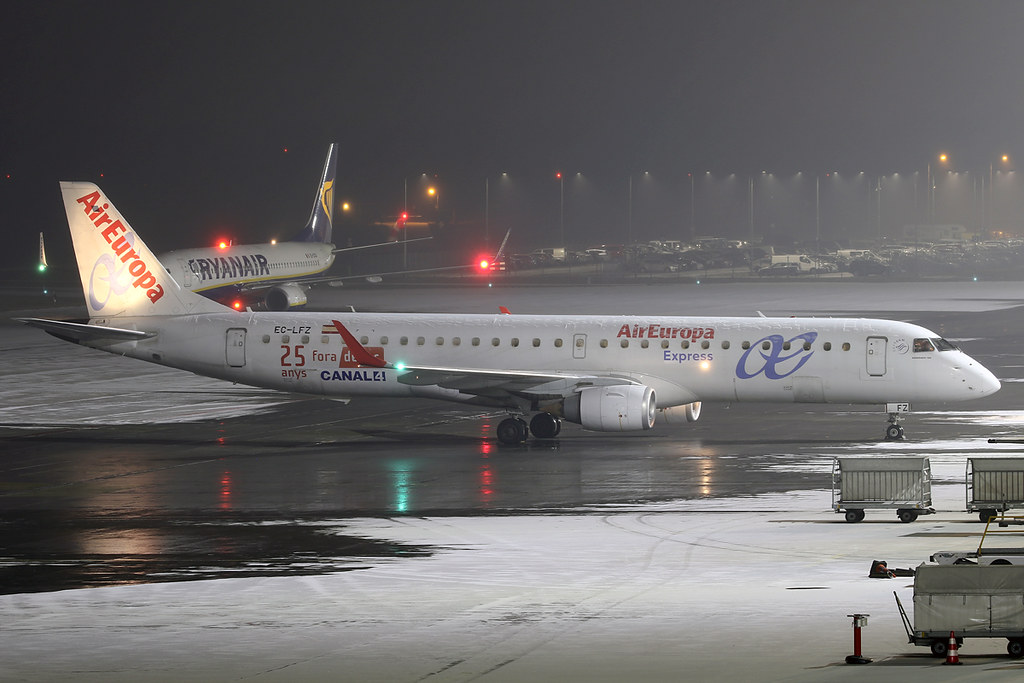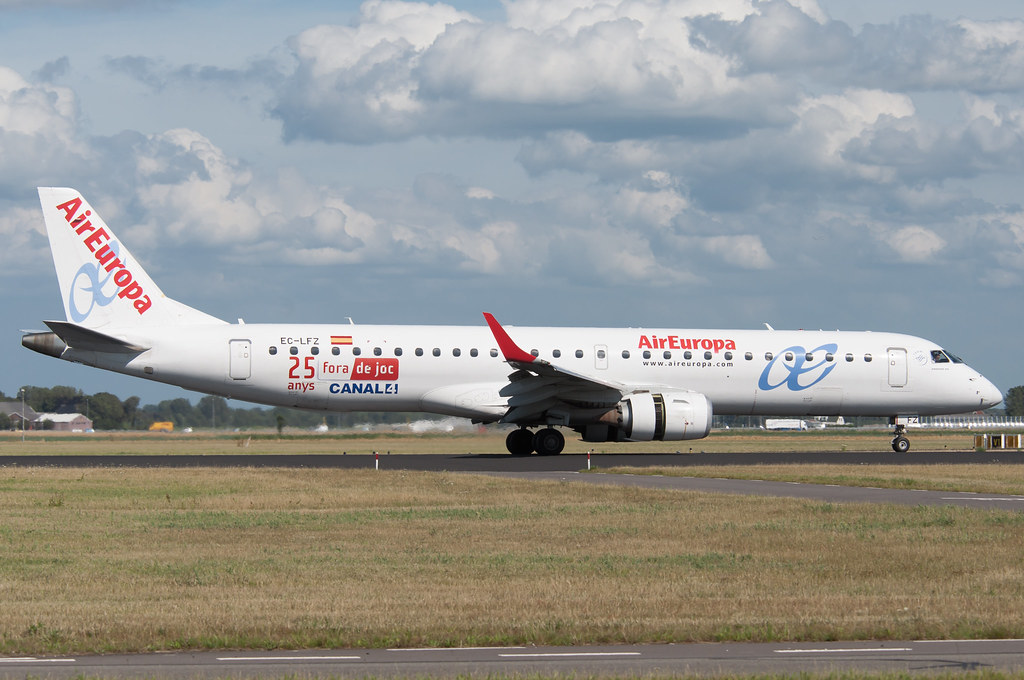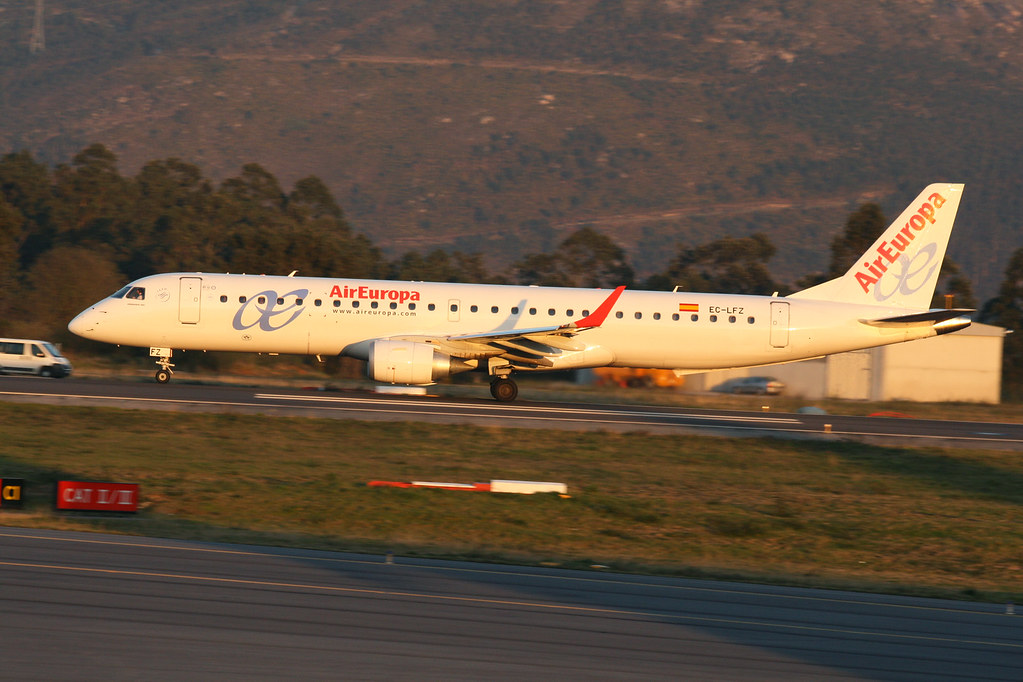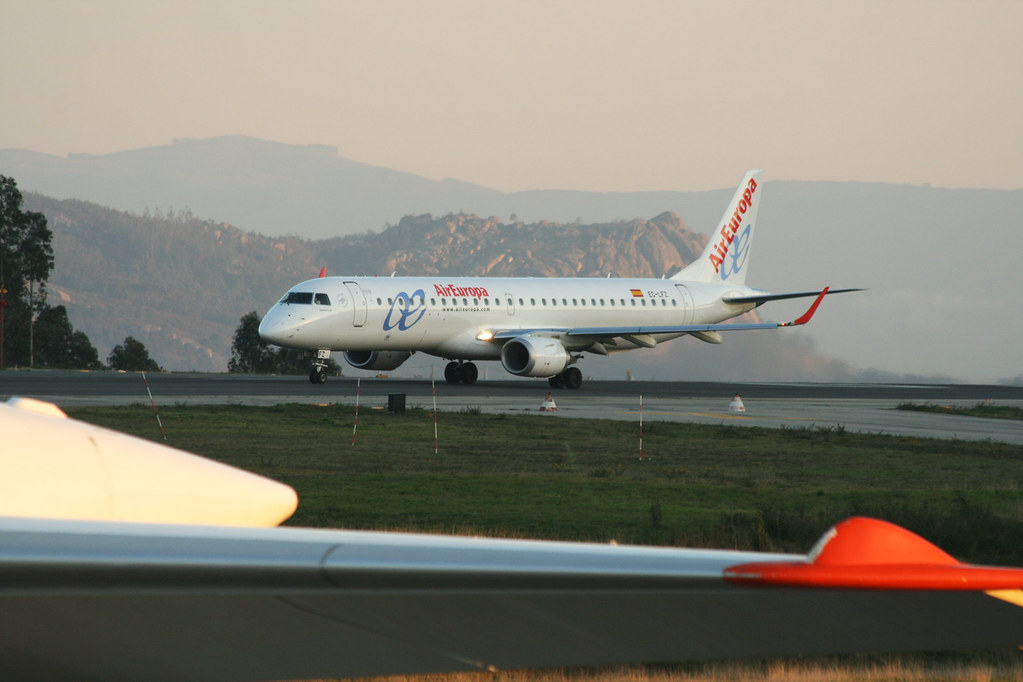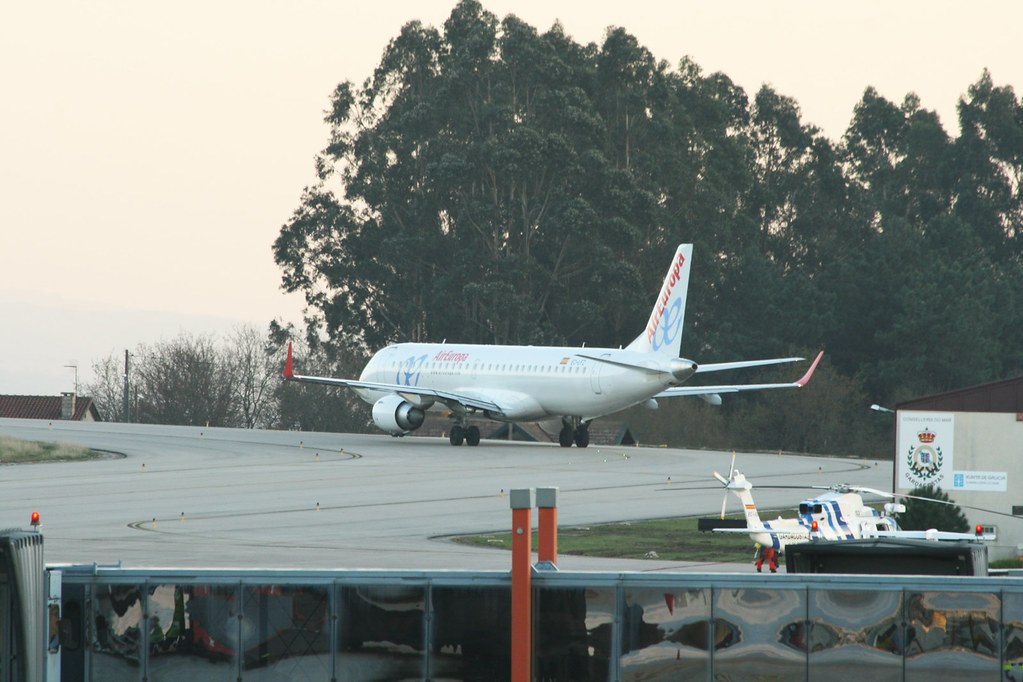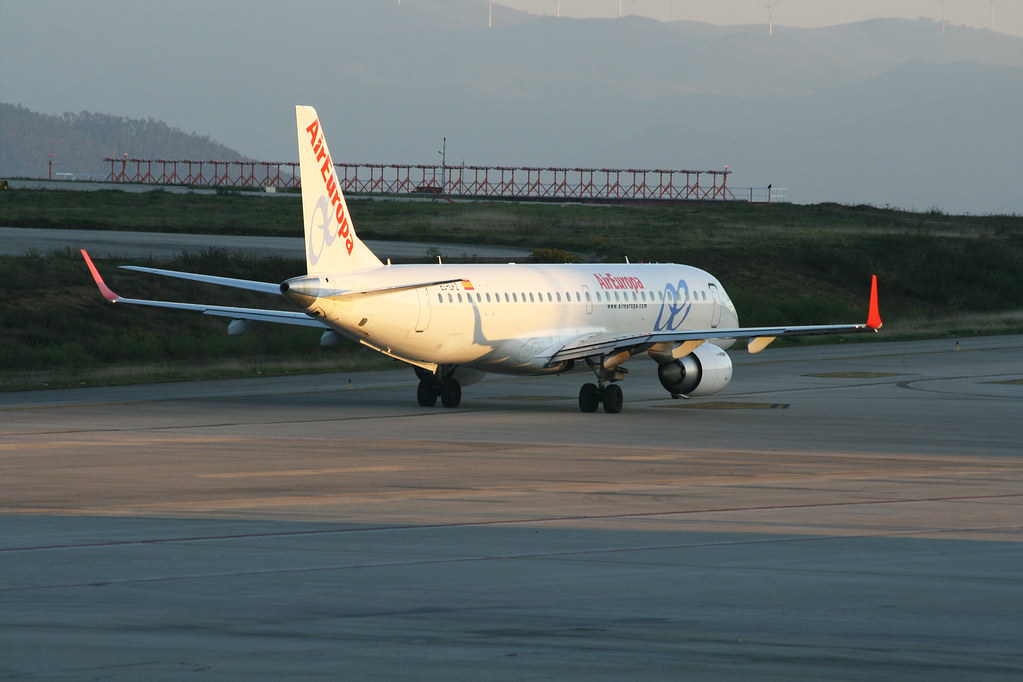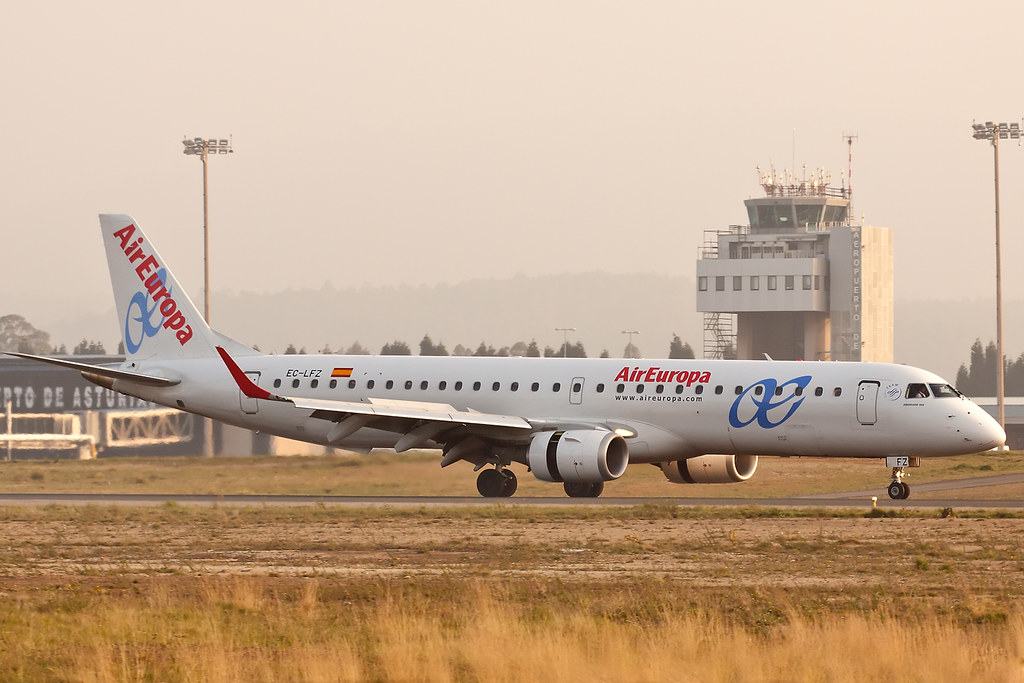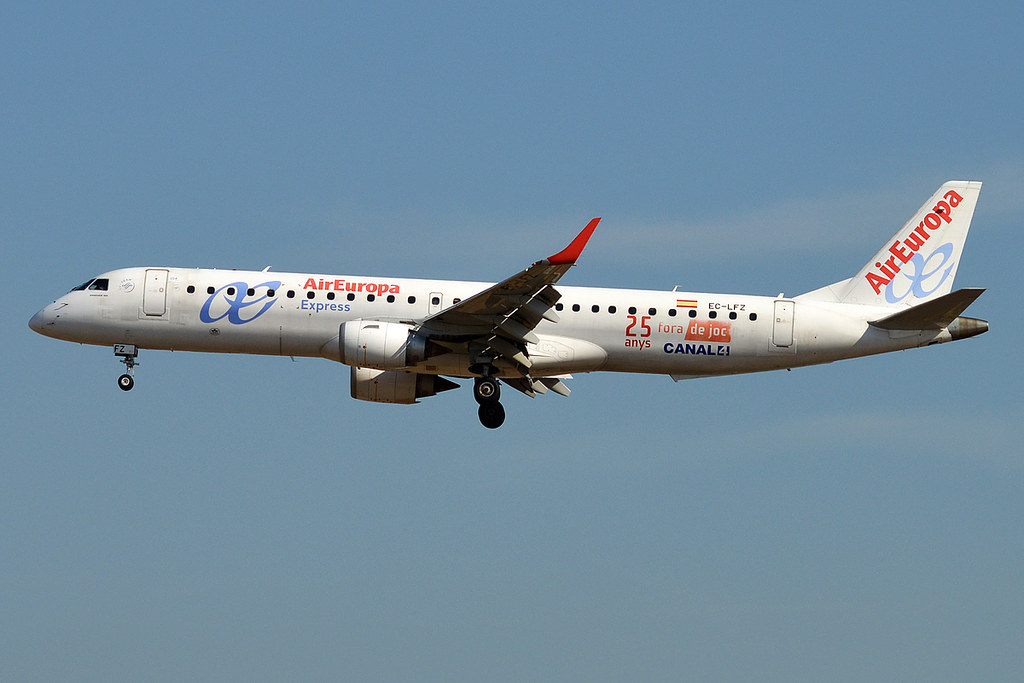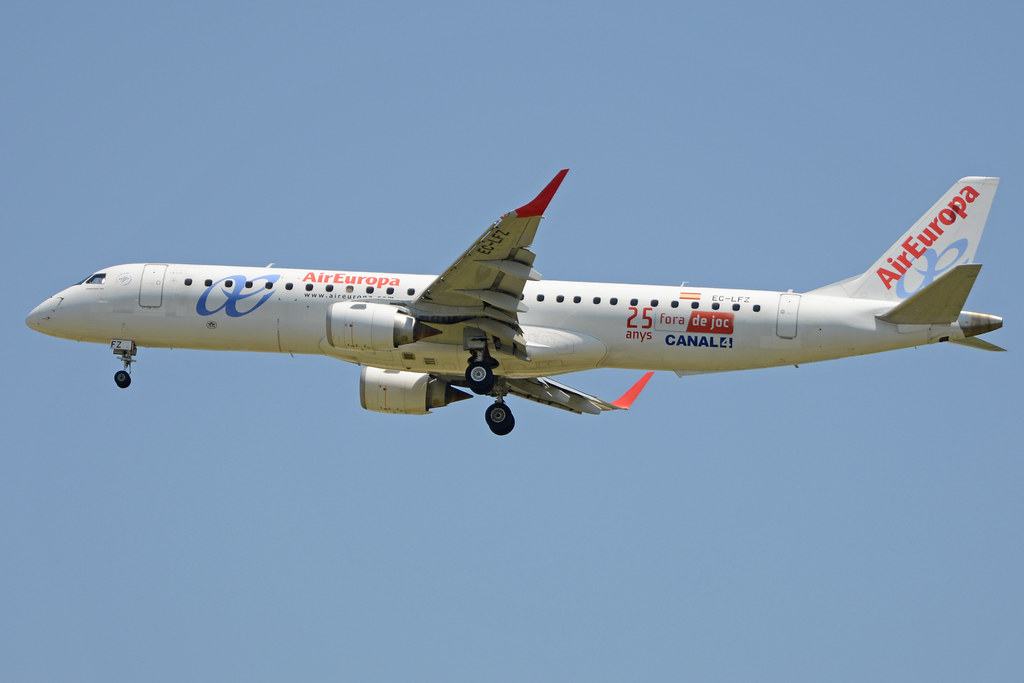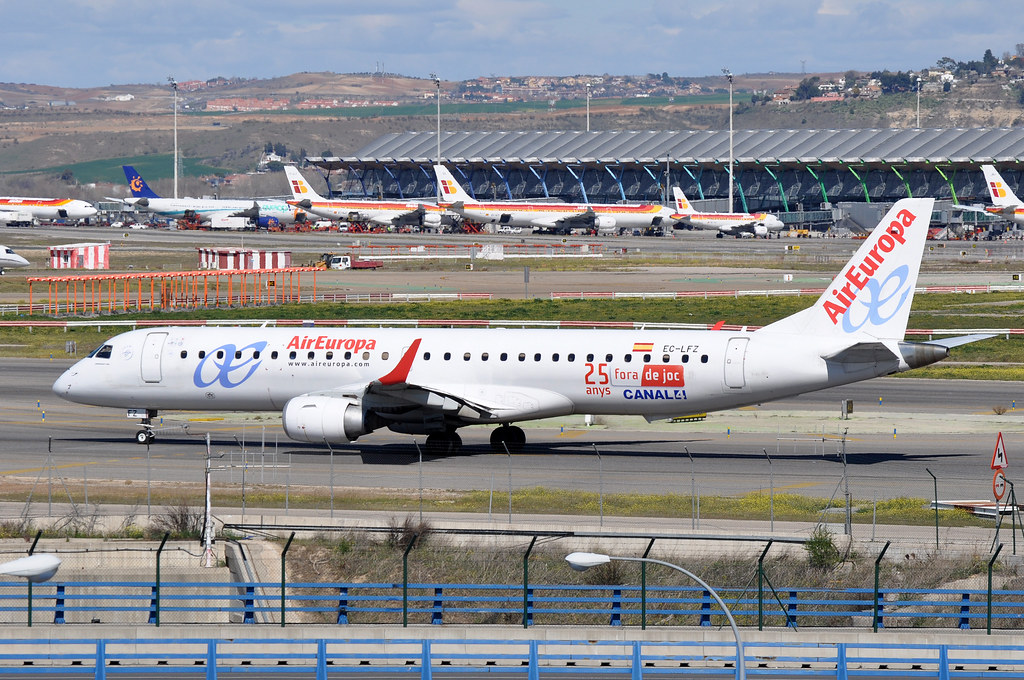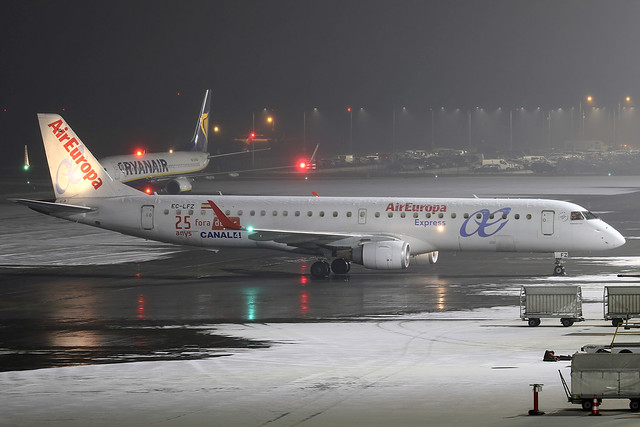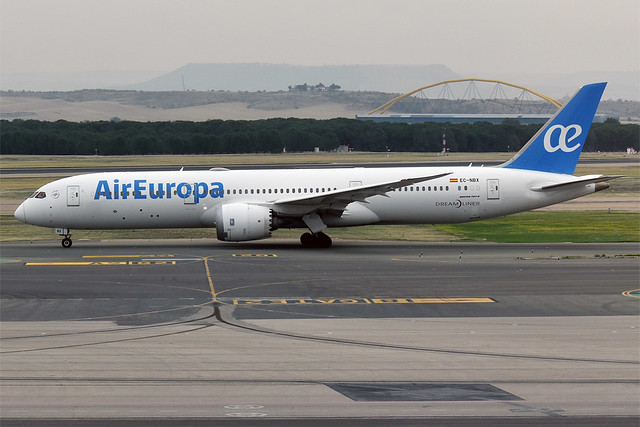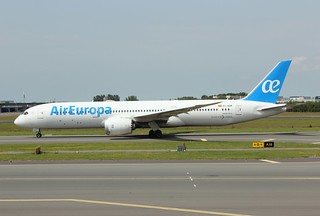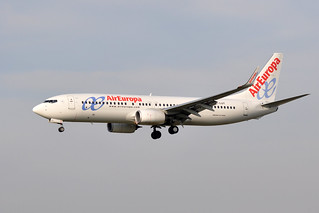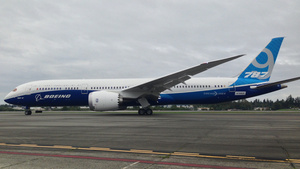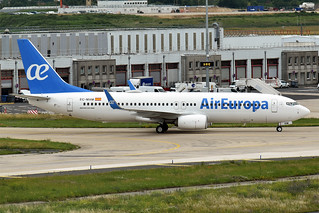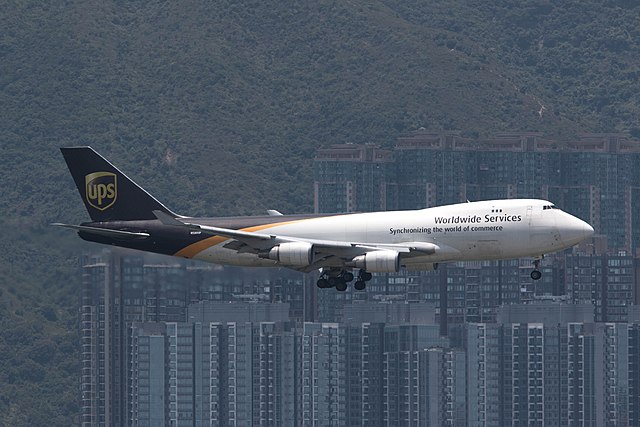Europa E195 and Lufthansa A320 at Brussels on Feb 23rd 2018, loss of separation resolved by TCAS
Last Update: September 8, 2020 / 14:12:48 GMT/Zulu time
Incident Facts
Date of incident
Feb 23, 2018
Classification
Report
Airline
Air Europa
Flight number
UX-1172
Departure
Brussels, Belgium
Destination
Madrid, Spain
Aircraft Registration
EC-LFZ
Aircraft Type
Embraer ERJ-195
ICAO Type Designator
E195
Two minutes later a Lufthansa Airbus A320-200, registration D-AIUI performing flight LH-1009 (callsign DLH4Y) from Brussels (Belgium) to Frankfurt/Main (Germany), departed from Brussels' runway 07R and was climbing along standard departure route SPI5J.
Another aircraft was overflying the departure sector at FL090, in addition a departure from Antwerp Airport was climbing through the departure sector of Brussels.
A trainee air traffic controller, who had already been active controller in Latvia, under supervision by an instructor (OJTi - on the job training instructor) was undergoing on the job training to get used to the new environment at Brussels. ATC cleared the E195 to climb to FL070 when it was climbing through 3700 feet at about 100fpm climb rate, the crew increased the climb rate to about 3000 fpm.
Subsequently ATC cleared the A320 to climb to FL080 while climbing through 2700 feet at 2800 fpm climb rate, the E195 was climbing through 4800 feet at that time.
About 40 seconds after clearing the E195 to climb to FL070 ATC cleared the E195 to climb to FL080 and advised of the traffic at FL090 above them. As result the pilot flying decided to use vertical speed mode at 800 fpm for the climb to avoid a TCAS advisory. 30 seconds later ATC cleared the the E195 to turn right towards VOR CIV.
Another 40 seconds later ATC cleared the A320 to turn right towards waypoitn REMBA, the A320 was climbing through 4900 feet at 1400 fpm while the E195 was climbing through FL061 at 700 fpm. The A320 started their right hand turn climbing through FL056 at 3400fpm, at that time the E195 was climbing through FL063 at 700 fpm, the horizontal distance was 5nm.
Another departure reported on frequency, while the aircraft was reporting, a short term conflict alert activated on the controller's desk indicating the developing conflict between the E195 and A320, the A320 climbed through FL069 at 1200 fpm while the E195 was climbing through FL067 at 700 fpm, horizontal distance had reduced to 4nm.
ATC instructed the E195 to turn left heading 180 immediately and the Lufthansa A320 to stop climb immediately. TCAS resolution advisories activated in both cockpits, the E195 declined an instruction to descend to FL060 due to the TCAS resolution adivsory.
Both aircraft followed their TCAS resolution advisories, separation was restored at 1000 feet vertically between the aircraft after both aircraft had come as close as 400 feet vertical and 1.3nm horizontally.
The instructor took over control, after both aircraft reported clear of conflict they were both cleared to climb further, both aircraft continued to destinations without further incidents.
On Sep 8th 2020 Belgium's Air Accident Investigation Unit (AAIU) released their final report concluding the probable causes of the serious incident were:
Findings as to causes and contributing factors
- The trainee ATCO gave an instruction to the A320 (DLH4Y) to turn earlier than foreseen by the published route without taking the projected flight path of the ERJ195 AEA1172 into consideration. He assumed that there would be enough separation.
[direct causal factor]
[Action/decision – Action – Incorrect action selection - ATCO]
[Action/decision – Info processing - Expectation/assumption- ATCO]
- The trainee ATCO declared he was a bit under stress and that he considered every shift as an examination. He was eager to show that he could be proactive
[contributing factor]
[Psychological – Mental/emotional state – Stress - ATCO]
- The potential conflict was initially not noticed by the OJTi. The trainee was speaking with rather low voice and the OJTi doesn’t dispose of a separate radar screen.
[contributing factor] [safety issue 4.1]
[Task performance – Monitoring – OJTi]
[Task environment – Physical workspace – Positioning – Effect on ATC OJTi]
[Management – Resources – Availability of equipment – ATC]
- The design of the departures from EBAW to GILOM and EBBR to REMBA lead to converging courses.
[contributing factor]
[Operating environment – Air traffic – Departure procedure(s) – Effect on operation]
- When the STCA popped up there was still a lack of situational awareness of the ATCO. He thought that the A320 was much lower than the ERJ195 while in fact the aircraft was already above. He initially gave the wrong instruction to stop climbing to the A320
[contributing factor]
[Psychological – Perception/orientation/illusion – Situational awareness - ATCO]
Findings as to factors that increase(d) risk
- The trainee stated that he was tired and not sleep very well
[Physical – Alertness/Fatigue – General – ATCO]
- There was a delay in giving correct climb instructions to the A320. The OJTi knew what the solution was and informed the ATCO but as he was a bit confused he didn’t react immediately.
[Task performance – Coordination – Between trainee ATCO and OJTi]
- Currently no rule or procedure exist for the configuration of a trainee with his OJTi about who has the responsibility or priority in case of situations requiring immediate action.
[safety issue 4.2]
[Management – Policy/procedure – Availability of procedures – ATC]
- The crew of the A320 didn’t react adequately on the TCAS RA. However they declared that they had visual contact with the conflicting traffic.
[Action/decision – action – Delayed action/lack of action – Flight crew]
- Although the flight level is indicated on the radar display for each aircraft, the ATCO still sees a lateral 2-D view. No aids currently exist to show a 3D-situation and/or a vertical resolution to solve the conflict in case of a STCA.
[safety issue 4.3]
[Task environment – Physical workspace – Warnings/alarms – Availability of related info]
Other findings
- That day the trainee ATCO started his shift at 06:45 UTC and had a break 30 minutes before the incident. So it happened approximately after 3 hours and 40 minutes of working (breaks
included).
- The OJTi was duly qualified and experienced.
- The ATCO tried to resolve the converging courses of the traffic from EBAW and EBBR (by design of the departure procedures) a bit by putting the B350 from EBAW to REMBA instead of GILOM.
- The STCA was triggered which allowed the ATC to react.
[positive factor - hardware safety net]
- The ACAS system on both aircraft alerted the concerned crew.
[positive factor - hardware safety net]
- At the time of the incident, VMC prevailed so both crew had visual contact.
[positive factor - soft safety net]
The AAIU analysed:
The situation was new to the trainee ATCO and he felt uneasy. As a result, OJTi gave an active coaching to the trainee, correcting some of his actions.
From the interview with the trainee, it appeared that he was in a (consciously – or unconsciously) mood ‘eager to please’ the OJTi; in need to show he could cope with the traffic, owing to previous bad experiences with other OJTi, being in a ‘down ‘mood. He didn’t sleep very well the last days.
He aimed on resolving the developing potential conflict with the A320 (DLH4Y). He first turned the B350 to REMBA instead of GILOM as per SID.
Subsequently he directed the ERJ195 to turn to CIV earlier than according to the SID.
The B350 to REMBA, from the North, is a smaller turboprop aircraft and thus has in se less climb performance. In anticipation of a possible conflict, the ATCO decided to have the A320 initiate his turn earlier than usual. This would put both aircraft with more lateral separation and would have allowed the A320 to climb higher than the B350 before lateral separation of 3 NM would have become a problem.
Focused on this situation, the trainee ATCO did not realize that the ERJ195, that departed from Brussels ahead of the A320, could become a problem.
When two aircraft are departing one after the other, it is usual that the lead aircraft is at a higher altitude than the one following. This is true when both aircraft are climbing at (roughly) the same rate, but is not always the case, as the rate of climb is determined by the aircraft parameters (weight, engine thrust, etc) .
However, in this case, the lead aircraft ERJ195 had received information regarding aircraft above him and therefore had reduced its rate of climb to a lower value. It resulted that DLH4Y was climbing much faster than AEA1172. Although the information is available to the trainee ATCO on the screen, he did not look and notice that information.
Indication to this is that when the STCA went on, the first reaction of the trainee ATCO was to instruct DLH4Y to stop climbing, although at that time, DLH4Y was at a higher altitude than AEA1172 that was still climbing.
When the STCA went on, the trainee controller was totally surprised. At that time another aircraft (a Ryanair B737) was calling in. In the rush to cope with the problem, he started his sentence with the Ryanair code followed by the end of the DLH4Y code, calling a non-existing aircraft (RYR4Y) although he realized the mistake, the rest of his initial message was useless.
The trainee ATCO wanted then to separate the aircraft horizontally; he instructed the ERJ195 to turn left and was giving the instruction to A320 to turn left as well, but he interrupted and instructed the A320 to stop climbing again, instruction which was understood and readback by the aircraft.
The instructor interrupted the trainee (not on the frequency), stating to let the A320 climb further. The trainee afterwards reported that this - what he thought he saw on the screen and what the instructor was saying - was a conflict of information and that he was a bit lost.
Finally, the trainee realized the situation and gave a last instruction – for the ERJ195 to descend – before the OJTi instructor took over the frequency. It finally took relatively long (20 seconds) to give the correct instructions that were a solutions to the problem.
By that time, both aircraft got a TCAS RA warning as well.
The evolution of the events was evenly not immediately noticed by the instructor. He became aware of the situation upon the initiation of the STCA warning. This is due to several factors:
- The instructor is sitting next to the trainee ATCO and he does not have the same view on the radar screen. He has to look ‘above the trainee shoulder’;
- The trainee speaks naturally with a low voice and keeps his instructions to aircraft short, shorter than usual for an ATCo. This made that the initiation of the problem – the instruction given to DLH4Y to turn to REMBA - was not heard by the instructor;
- The confidence of the instructor in the capacity of the trainee to perform.
During the interview, the instructor, who is not one of the three dedicated (usual) trainers for this trainee, stated that he was very pleased with his previous work that day at the ARR and DEP positions. He also stated that, since his performance for that day (and the two previous days they worked together) was more than acceptable, his confidence in his trainee was high. He therefore did not anticipate that the trainee would be able to give such a conflicting instruction which very quickly lead to a loss of separation.
Aircraft response to the TCAS warning.
Eurocontrol analysed the response to the TCAS warnings. The analysis showed:
ERJ195 (AEA1172):
- AEA1172 respond the Level Off RA promptly, arresting their climb within 5 sec. of the RA.
- Later, some 8 sec. after the RA, AEA1172 started to descend although the descent was not required by the Level Off RA.
- At the CPA (and coincidentally 1 sec. before the Clear of Conflict message), the descent rate was 1300 ft/min.
- AEA1172’s response to the RA should be classified as “excessive” (i.e. the rate vertical rate exceeded the rate required by RA).
- However, that helped to increase the vertical miss distance given the lack of response by DLH4Y.
A320 (DLH4Y):
- There was no visible reaction by DLH4Y to the Climb RA. The vertical rate remained at the 400-500 ft/min. range although 1500 ft/min. is required by the RA.
- Given AEA1172’s reaction to the RA, DLH4Y’s RA subsequently weakened to Level Off.
- After the Level Off RA, DLH4Y’s vertical rate decreased somewhat to reach 300 ft/min. just before Clear of Conflict.
- DLH4Y’s response to the RAs should be classified as “no reaction” as there was no visible change of the vertical rate for the duration of the RAs requiring a positive response.
The conclusions are as follows:
1. The analysis shows that TCAS II performed as required on board of both aircraft.
2. RA downlink messages and InCAS simulations indicate that both aircraft received compatible RAs.
3. DLH4Y did not respond to the initial Climb RAs and did not establish the 1500 ft/min. climb. Furthermore, DHL4Y did not respond the weakening Level Off RA.
4. AEA1172 initially responded correctly to the Level Off RA arresting their climb but then established a descent (which was not required by the RA). However, given the lack of response by DLH4Y the descent helped to increase the vertical miss distance.
5. At the Closest Point of Approach the spacing between the aircraft was 1.3 NM horizontally and 684 ft vertically.
Eurocontrol also simulated the worst case, i.e. the case where both aircraft would not respond or were not equipped with TCAS. They came to the conclusion that the vertical miss distance would have been 268 i.s.o of 684 ft in that case
Incident Facts
Date of incident
Feb 23, 2018
Classification
Report
Airline
Air Europa
Flight number
UX-1172
Departure
Brussels, Belgium
Destination
Madrid, Spain
Aircraft Registration
EC-LFZ
Aircraft Type
Embraer ERJ-195
ICAO Type Designator
E195
This article is published under license from Avherald.com. © of text by Avherald.com.
Article source
You can read 2 more free articles without a subscription.
Subscribe now and continue reading without any limits!
Read unlimited articles and receive our daily update briefing. Gain better insights into what is happening in commercial aviation safety.
Send tip
Support AeroInside by sending a small tip amount.
Related articles
Nova E195 and Europa B738 at Madrid on Jan 22nd 2022, first aircraft not clear of runway when the second touched down
An Aero Nova Embraer ERJ-195 on behalf of Air Europa, registration EC-LFZ performing flight UX-6078 from Palma Mallorca,SP to Madrid,SP (Spain) with…
Europa B789 at Santo Domingo on Apr 7th 2024, foreign object debris penetrates fuselage on landing
An Air Europa Boeing 787-9, registration EC-NBX performing flight UX-89 from Madrid,SP (Spain) to Santo Domingo (Dominican Republic), landed on Santo…
Europa B789 at Sao Paulo on Feb 14th 2023, strong burning smell in cabin
An Air Europa Boeing 787-9, registration EC-NGM performing flight UX-58 from Sao Paulo Guarulhos,SP (Brazil) to Madrid,SP (Spain), was enroute at…
Europa B738 at Lisbon and Madrid on Dec 9th 2022, flaps problem
An Air Europa Boeing 737-800, registration EC-LUT performing flight UX-1155 from Madrid,SP (Spain) to Lisbon (Portugal), was on final approach to…
Europa B789 at Montevideo on Oct 16th 2021, engine shut down in flight
An Air Europa Boeing 787-9, registration EC-NFM performing flight UX-45 from Madrid,SP (Spain) to Montevideo (Uruguay) with 321 people on board, had…
Europa B738 at Paris on Aug 17th 2020, bird strike
An Air Europa Boeing 737-800, registration EC-MXM performing flight UX-1026 from Paris Orly (France) to Madrid,SP (Spain), was climbing out of runway…
Newest articles
UPS B744 at Tokyo on May 6th 2023, hard touchdown on windshear recovery
A UPS United Parcel Service Boeing 747-400, registration N580UP performing flight 5X-109 from Shanghai Pudong (China) to Tokyo Narita (Japan), was on…
Delta B763 at New York on Apr 26th 2024, emergency slide trouble
A Delta Airlines Boeing 767-300, registration N176DN performing flight DL-520 from New York JFK,NY to Los Angeles,CA (USA), was climbing out of JFK's…
Subscribe today
Are you researching aviation incidents? Get access to AeroInside Insights, unlimited read access and receive the daily newsletter.
Pick your plan and subscribePartner

A new way to document and demonstrate airworthiness compliance and aircraft value. Find out more.

ELITE Simulation Solutions is a leading global provider of Flight Simulation Training Devices, IFR training software as well as flight controls and related services. Find out more.

Your regulation partner, specialists in aviation safety and compliance; providing training, auditing, and consultancy services. Find out more.
AeroInside Blog
Popular aircraft
Airbus A320Boeing 737-800
Boeing 737-800 MAX
Popular airlines
American AirlinesUnited
Delta
Air Canada
Lufthansa
British Airways
